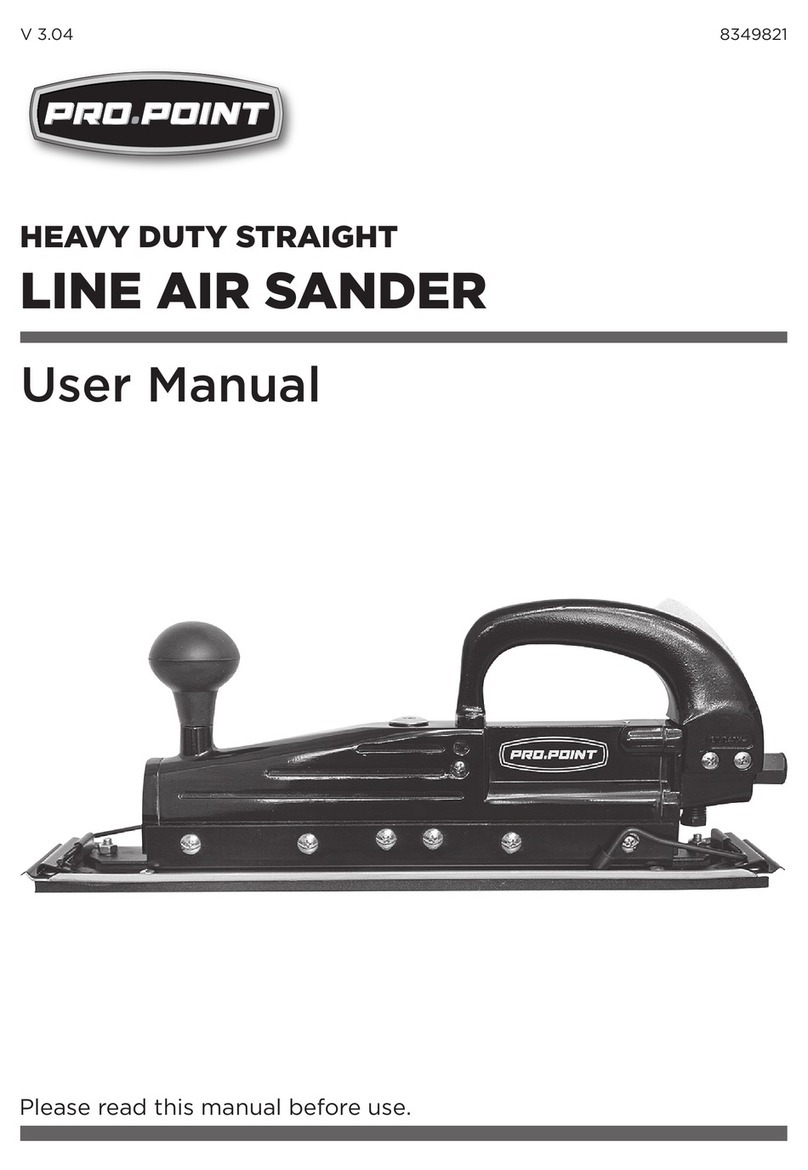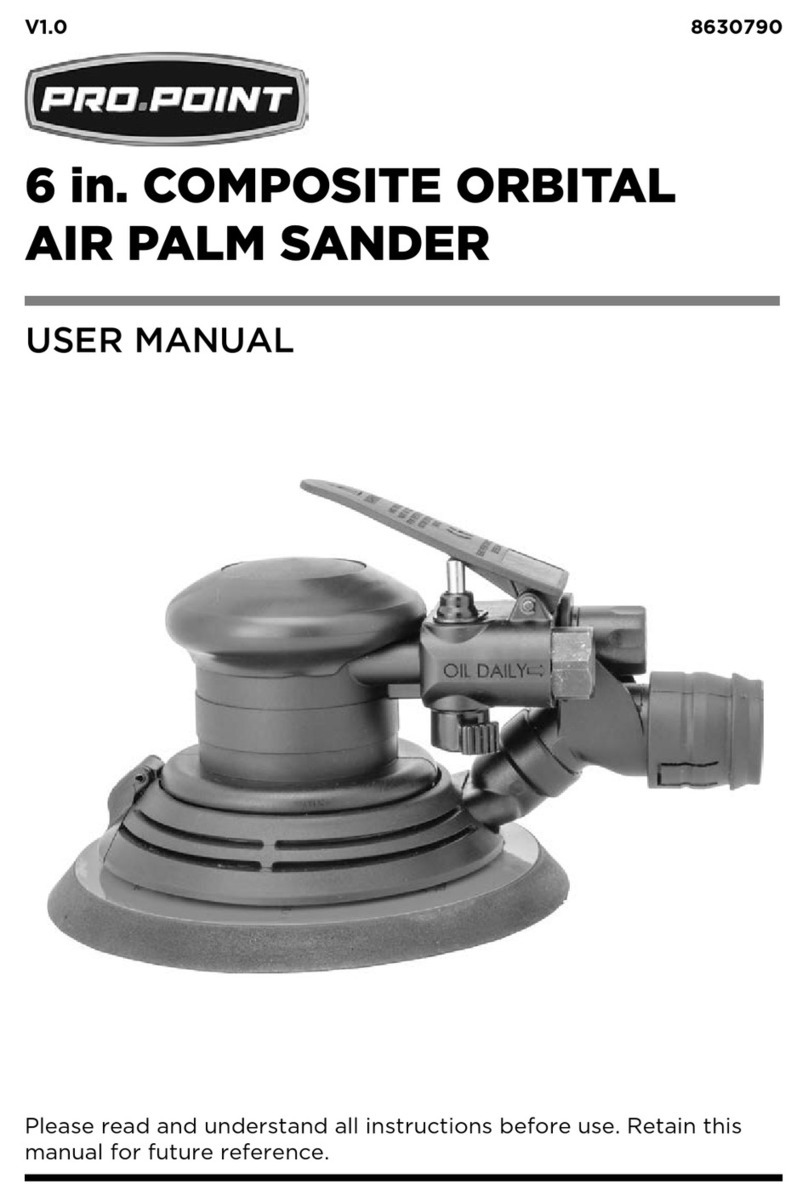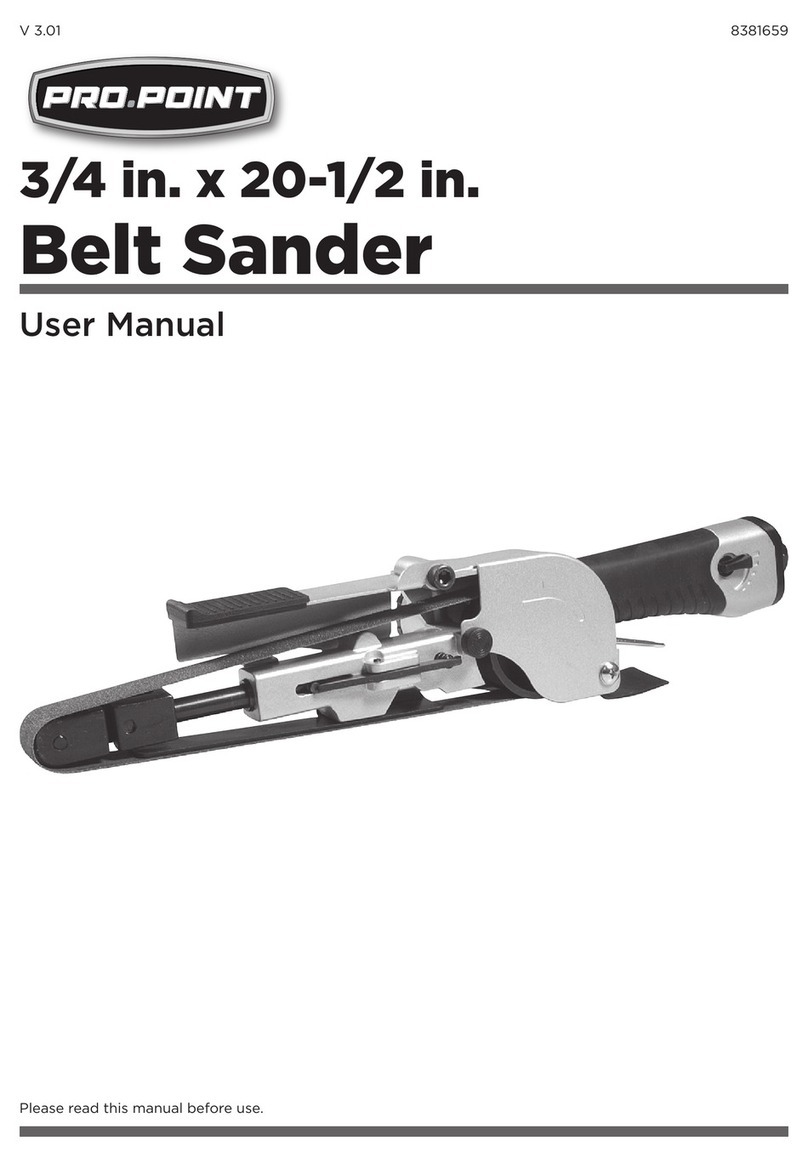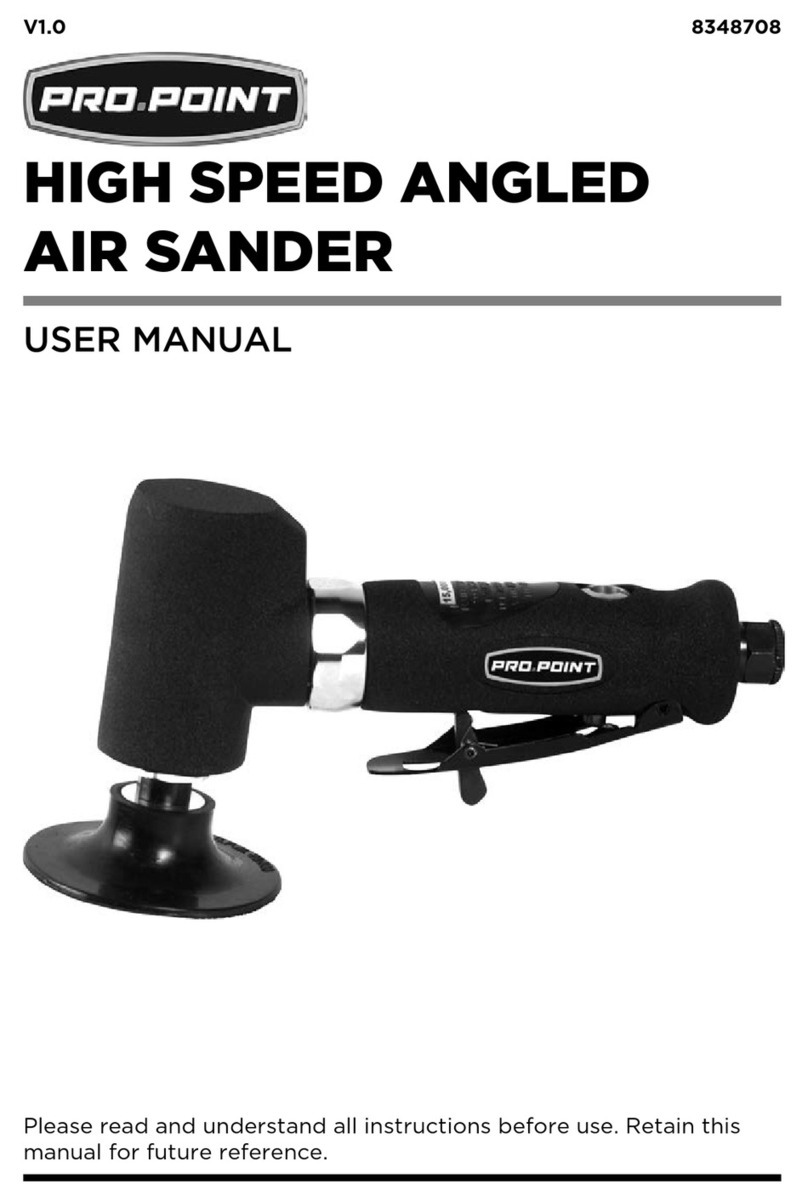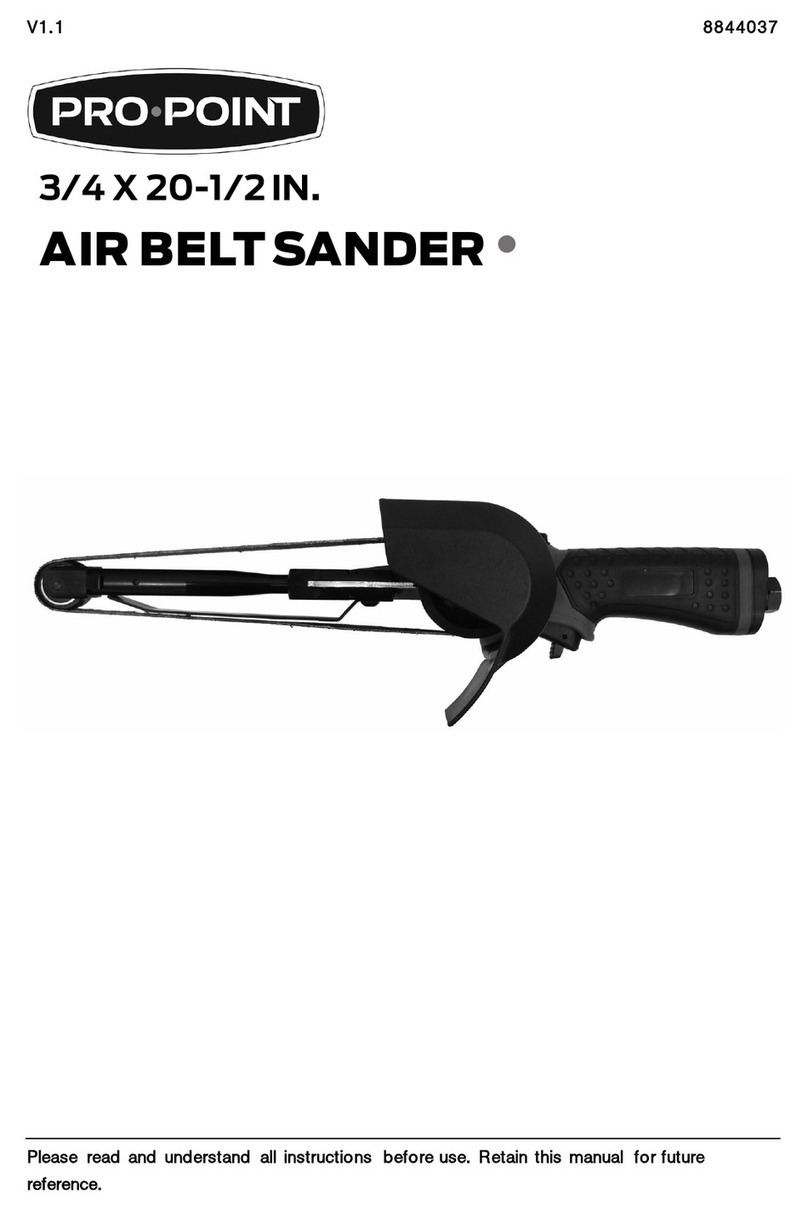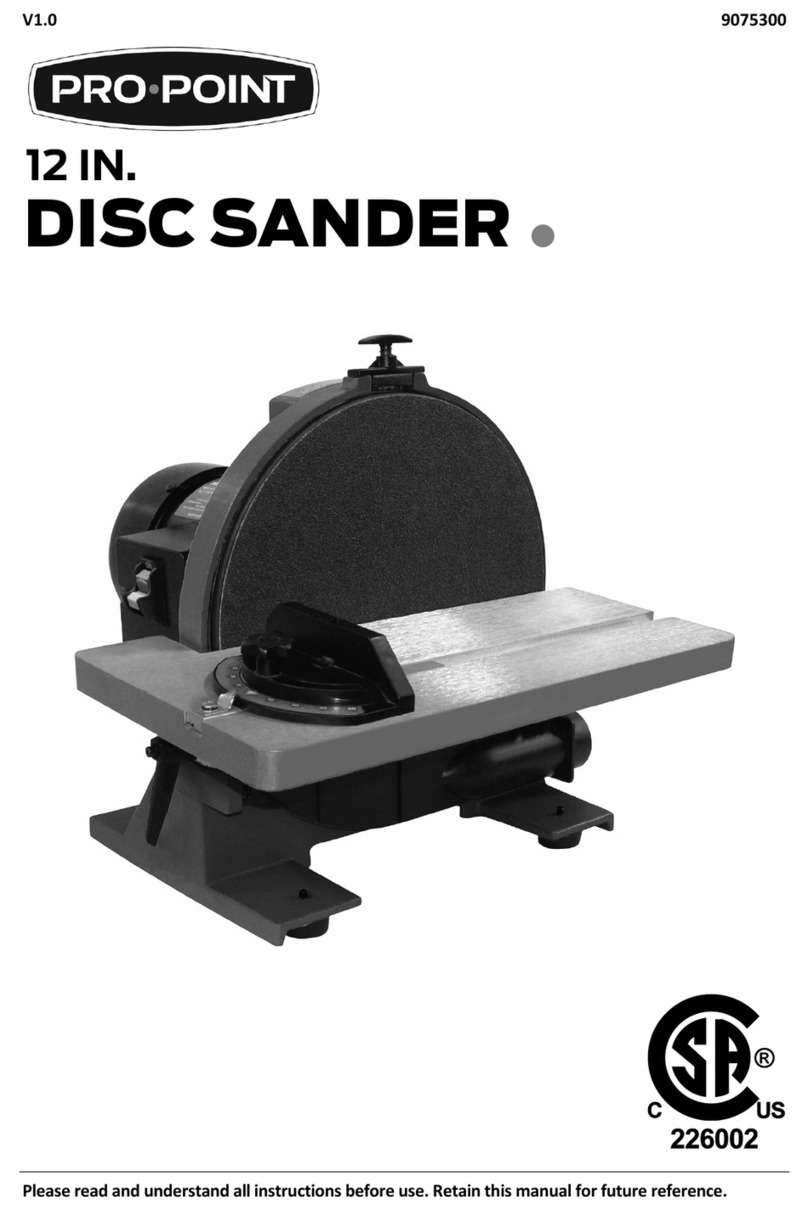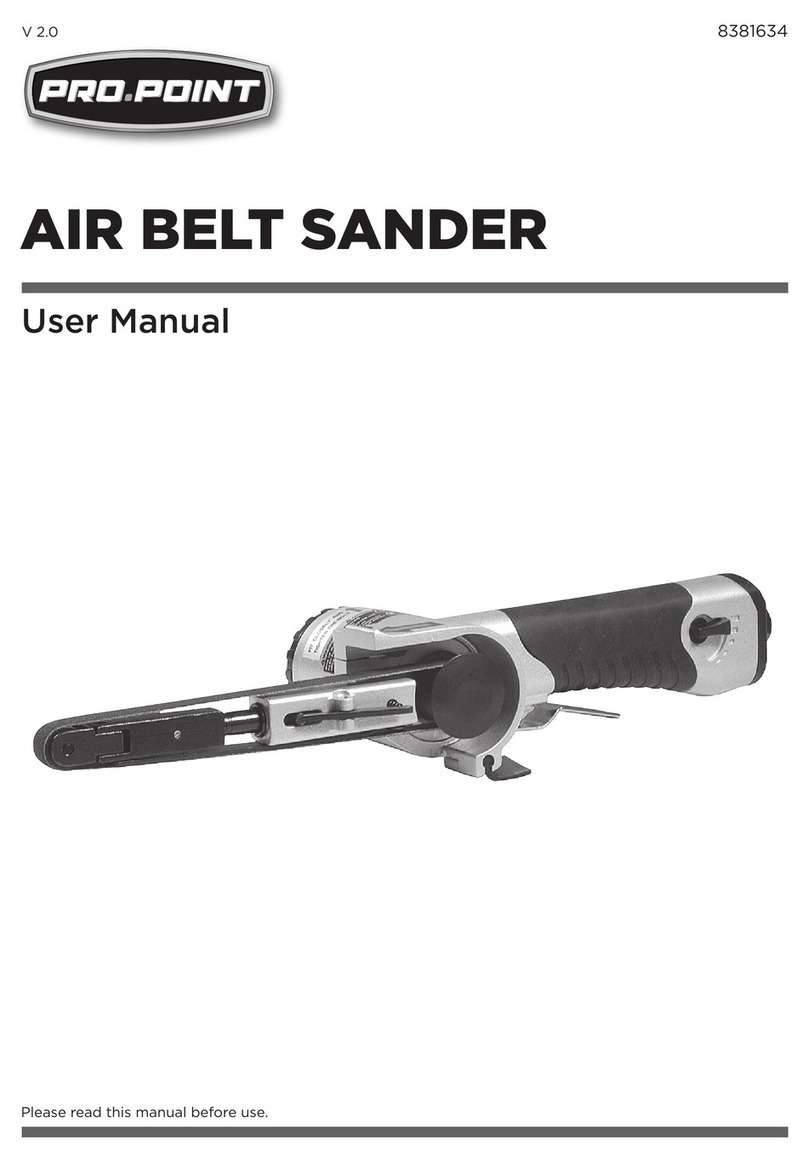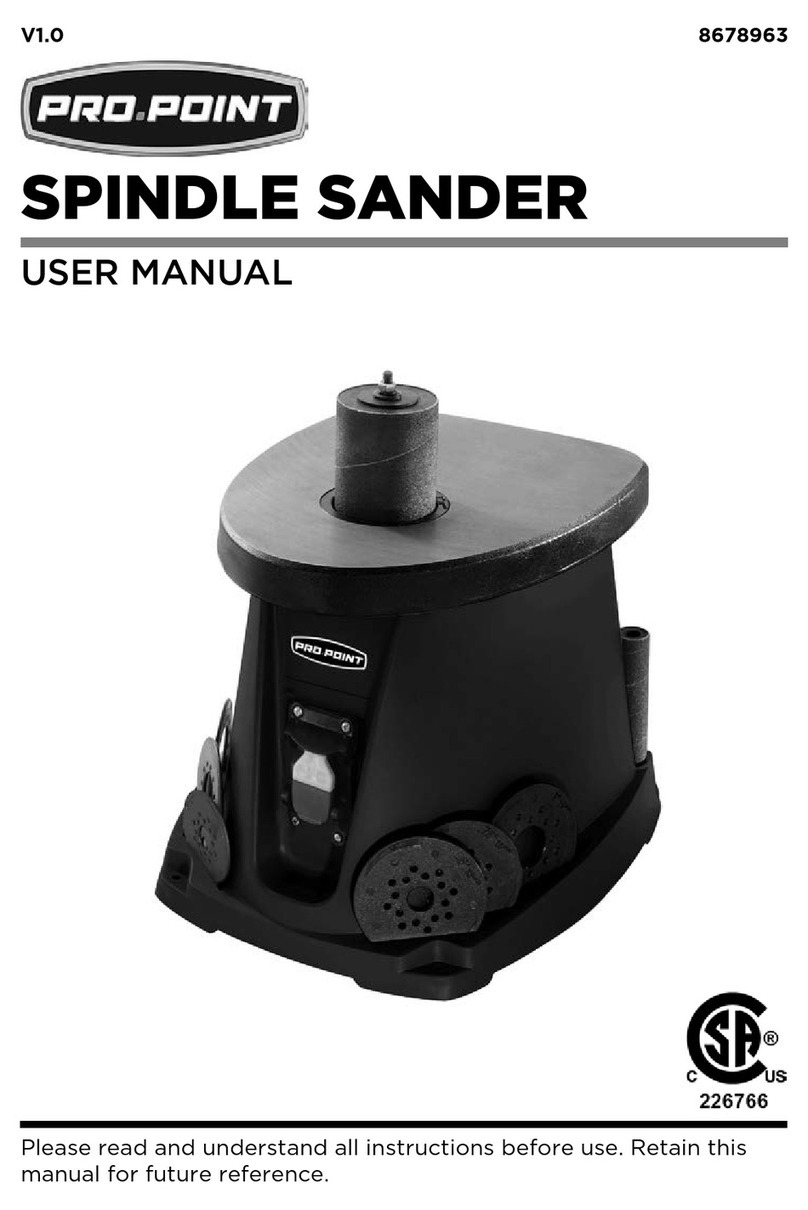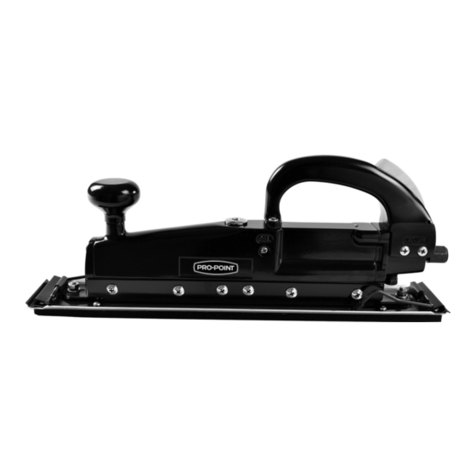
V1.0 6 IN. 1/2 HP BELT SANDER 8706160
Visit www.princessauto.com for more information 5
ELECTRICAL SAFETY
WARNING! Do not touch or handle a live tool with any
part of your body that is wet or damp. Wet skin reduces
resistance to electrical current, increasing the danger of a
serious or fatal shock.
WARNING! To reduce risk of electric shock, be certain that the
plug is connected to a properly grounded receptacle.
1. Disconnect tool from power source before cleaning,
servicing, changing parts/accessories or when not in use.
2. Protect yourself against electric shocks when working on
electrical equipment. Avoid body contact with grounded
surfaces. There is an increased chance of electrical shock if
your body is grounded.
3. Do not expose the tool to rain or wet conditions. Water
entering a power tool will increase the risk of electric shock.
4. Do not disconnect the power cord in place of using the
ON/OFF switch on the tool. This will prevent an accidental
startup when the power cord is plugged into the power supply.
4.1 In the event of a power failure, turn off the machine as
soon as the power is interrupted. The possibility of
accidental injury could occur if the power returns and
the unit is not switched off.
5. Do not alter any parts of the tool or accessories. All parts
and accessories are designed with built-in safety features
that may be compromised if altered.
6. Make certain the power source conforms to requirements
of your equipment (see Specifications).
7. When wiring an electrically driven device, follow all
electrical and safety codes, as well as the most recent
Canadian Electrical Code (CE) and Canadian Centre for
Occupational Health and Safety (CCOHS).
